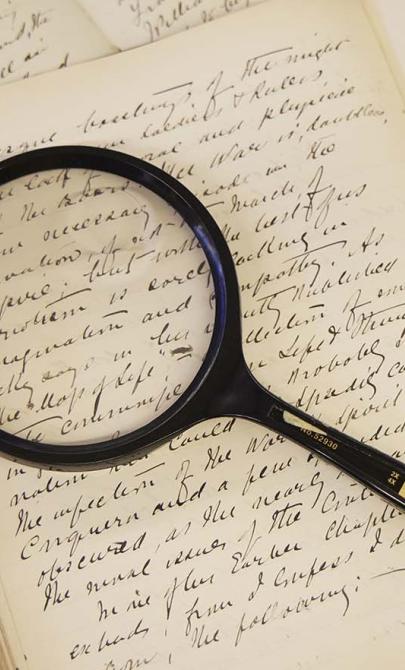The decline of the Khmer Empire
During this time the kings of Angkor sustained an empire with canals and enormous man-made lakes; revered the spiritual realm with statues of gold and precious jewels; and built monuments celebrating their ancestors and kin. It has been calculated that, combined, the monuments and buildings of Angkor used more stone than all the pyramids of Egypt.
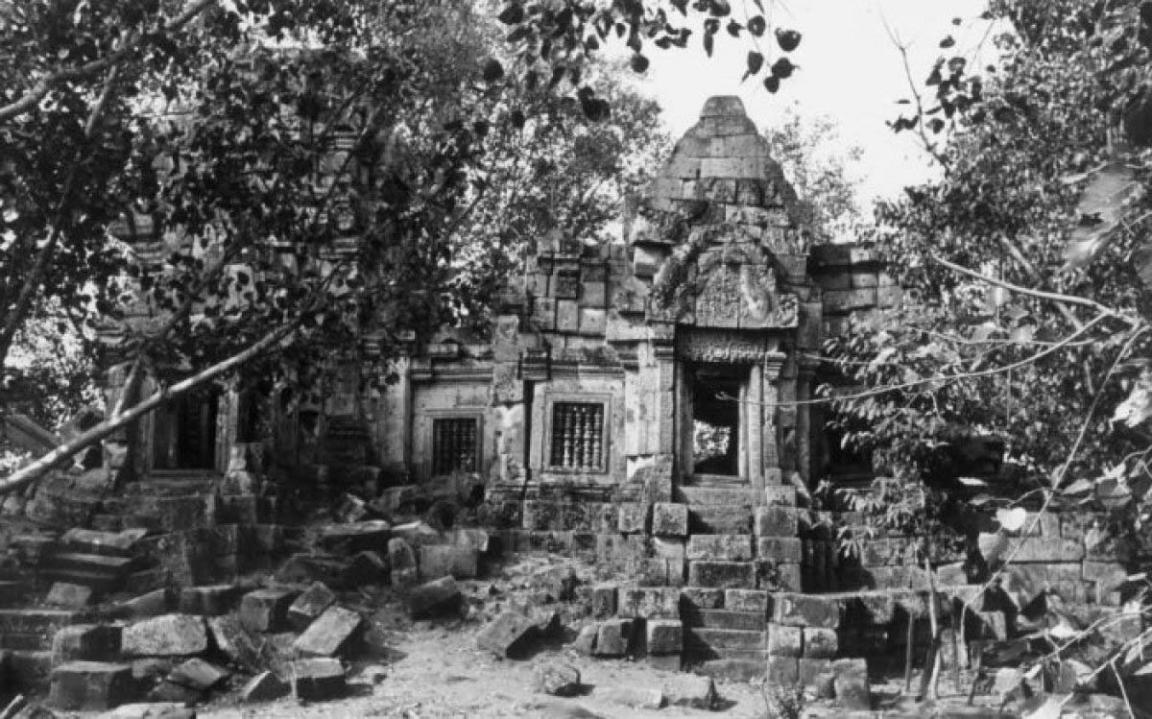
Yves Coffin, [Wat Ek, comprehensive view, southern side], nla.gov.au/nla.obj-140371255
Yves Coffin, [Wat Ek, comprehensive view, southern side], nla.gov.au/nla.obj-140371255
However, like many great empires in history, internal fractures and external forces began to wear away at the stability of the realm.
By the time Zhou Daguan visited Angkor in 1296, the Empire was already in decline. From the reign of Jayavarman VII (1181–1218) there had been a sharp drop in building projects and inscriptions; records and artworks became a rarity.
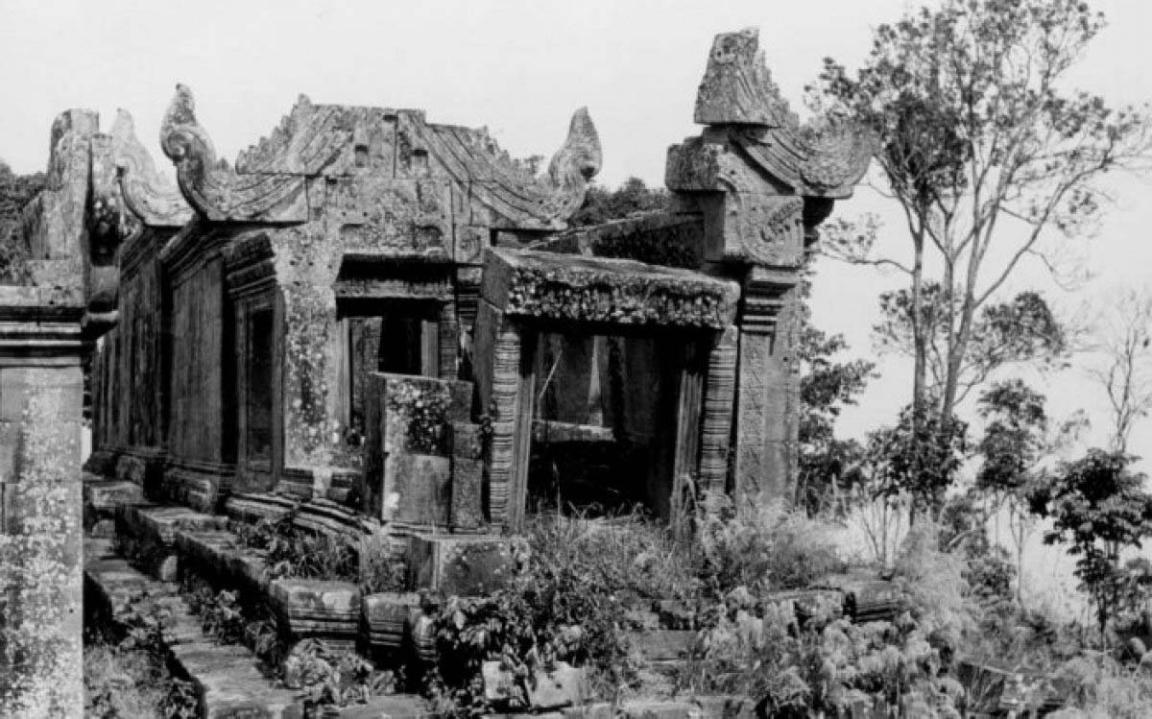
Yves Coffin, [Preah Vihear, Library H, seen from the east], nla.gov.au/nla.obj-140370657
Yves Coffin, [Preah Vihear, Library H, seen from the east], nla.gov.au/nla.obj-140370657
When compared with other empires throughout world history, the 629 years of the Khmer Empire places it as one of the longest reigning empires in world history*.
| Empire | Modern location of historical power centre | Approx. foundation | Approx. end | Total duration (years) |
|---|---|---|---|---|
| Sumer | Iraq | 4500 BCE | 1900 BCE | 2600 |
| Byzantine Empire | Turkey/Greece | 330 CE | 1453 CE | 1123 |
| Ghanaian | Mali | 300 CE | 1240 CE | 940 |
| Holy Roman Empire | Central Europe/Germany/Italy | 962 CE | 1806 CE | 844 |
| Zhou Dynasty | China | 1046 BCE | 256 BCE | 790 |
| Khmer | Cambodia | 802 CE | 1431 CE | 629 |
| Ottoman | Turkey | 1299 CE | 1922 CE | 623 |
| Dutch | The Netherlands | 1568 CE | 1975 CE | 407 |
| British | England | 1603 CE | 1997 CE | 394 |
| Russian | Russia | 1721 CE | 1917 CE | 196 |
*This list is not exhaustive.
There have been many theories about the decline and eventual collapse of Angkor as a political entity; however, it is likely that a combination of all the theories, not one single event, contributed to the demise of the Khmer Empire.
External forces battered the kingdom. In the west, the Thai kingdoms of Sukhothai and Ayutthaya were growing more powerful. Increasingly frequent Thai incursions into Khmer territory disrupted trade and the safety of the empire. In the north, the Lan Xang (modern Laos) were growing bolder and stronger and repeated campaigns in the Khmer territories unsettled the people who slowly migrated away to find safety elsewhere.
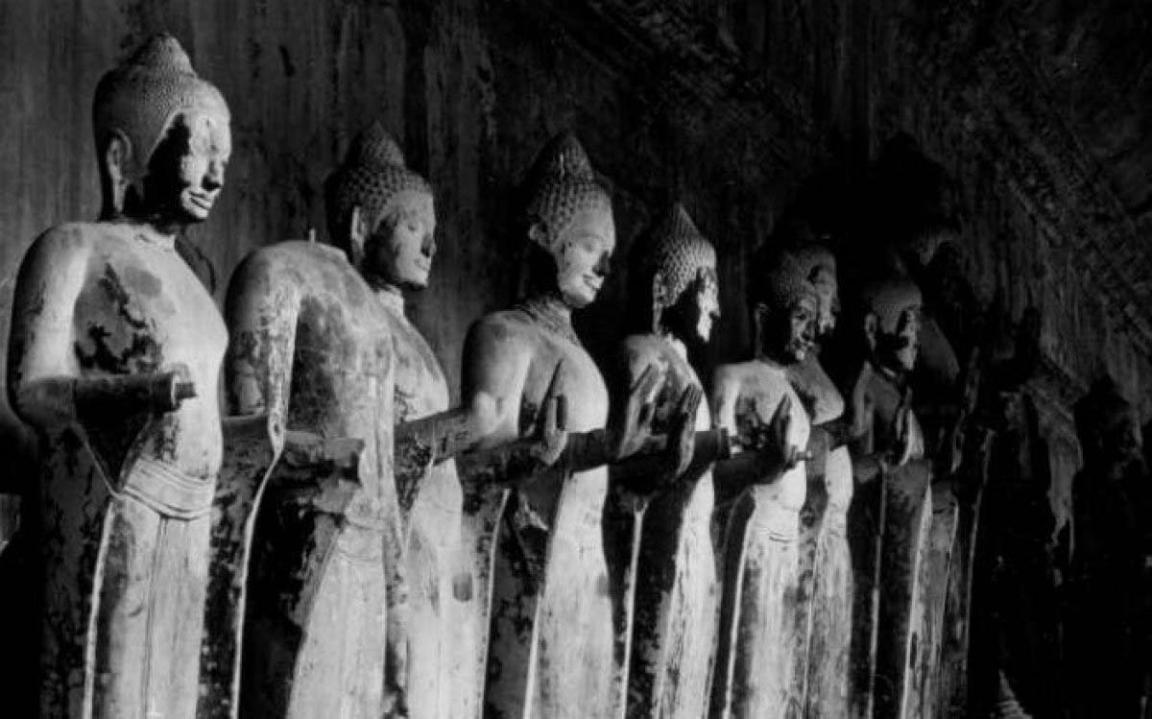
Yves Coffin, [Angkor Wat, Buddhas], nla.gov.au/nla.obj-140371553
Yves Coffin, [Angkor Wat, Buddhas], nla.gov.au/nla.obj-140371553
Environmental changes have also been considered as a factor in the empire’s decline.
There has been debate around the decline of Angkor coinciding with an era of rapid climate change known as the ‘Little Ice Age’, which began in around 1300 following the Medieval Warm Period.
The natural transition of global temperatures had wide-ranging impacts across the globe. In Europe, rivers froze regularly, and crop harvests diminished. In South-East Asia, the steady pattern of wet–dry seasons became volatile. Regular rainfall gave way to decades-long drought followed by unusually heavy, destructive downpours. The climatic volatility decreased the productivity of traditional Khmer rice cultivation areas. To counteract the low productivity, farmers increased the size of their fields. Old-growth forest was cleared for use as farmland; however, during the heavy rains, sediment once held in place by the forest eroded and washed into the barays. The barays and canals became clogged with soil and the earth dykes were continually battered and damaged by floodwaters. Angkor and its people relied on the baray and canal systems to sustain them. Some scholars have proposed that, towards the end of the empire, the silt build-up in the canals that fed and drained the lakes was so extensive that many became unusable or inefficient at supporting the population. With less food, mustering the manpower to clear them became an increasingly difficult task.
Internal pressures, too, were causing instability. Break-ups within the fabric of the empire were causing pressure on the government. For centuries, the people of the Khmer Empire had varied spiritual pursuits, but most people worshipped the Hindu god Shiva and/or practised Mahayana, a form of Buddhism. These philosophies espoused the virtues of honouring ancestors and family and were the basis of royal power. Over time, there was a shift among the people and ruling elite of the empire towards Theravada Buddhism. This more conservative form of Buddhist belief promoted an austere life, personal sacrifice and social equality. This sat at odds with a royal court and a class system in which an elite group administered those below them.
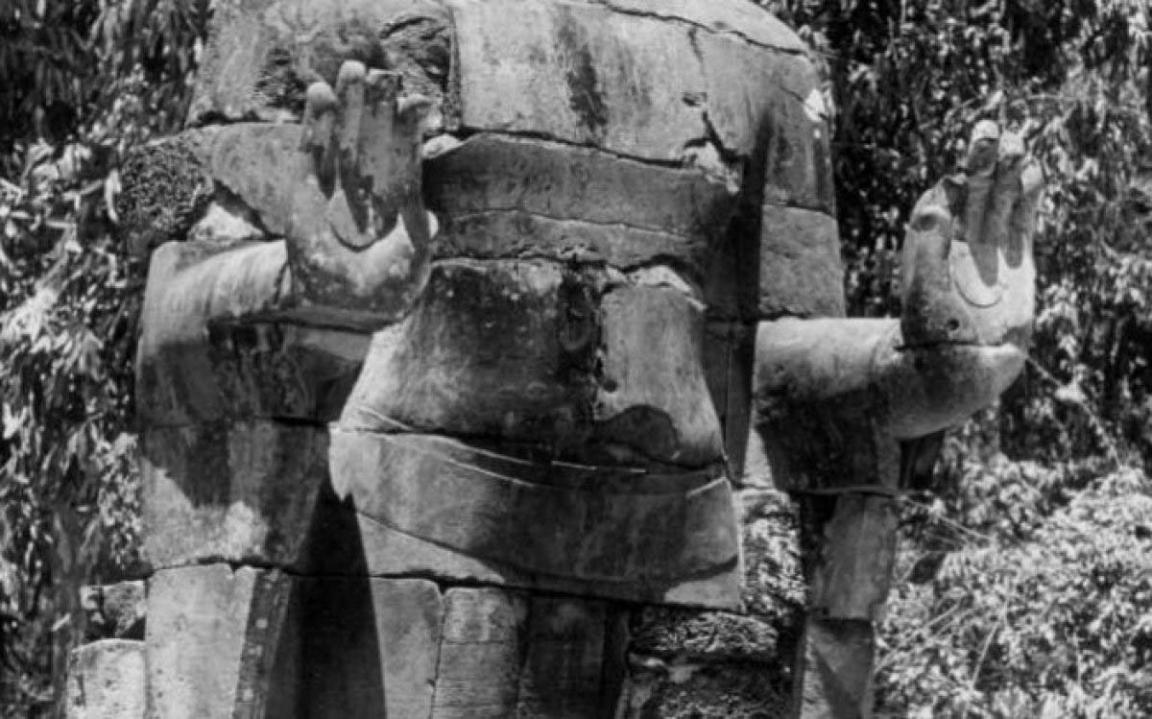
Yves Coffin, [Tep Pranam, Buddha], nla.gov.au/nla.obj-140372004
Yves Coffin, [Tep Pranam, Buddha], nla.gov.au/nla.obj-140372004
In 1353, Angkor was conquered by Thai forces, who briefly established a government there. The Khmer recaptured the city, but lost it again to subsequent attacks by the Thai kingdoms. The city was sacked and burned many times. Outlying Khmer provinces were lost to raids by the kingdom of Lan Xang in the north and the final blow to the empire came when the Thais laid siege and captured Angkor for the final time in 1431.
With the city sacked, trade routes disrupted and the surrounding areas unsafe, people left the once great metropolis in search of stability elsewhere. What remained of the Khmer Empire moved its political centre south to modern Phnom Penh. Following the move of the capital, there was a marked and rapid decline in what remained of the political, military and cultural power of the empire.
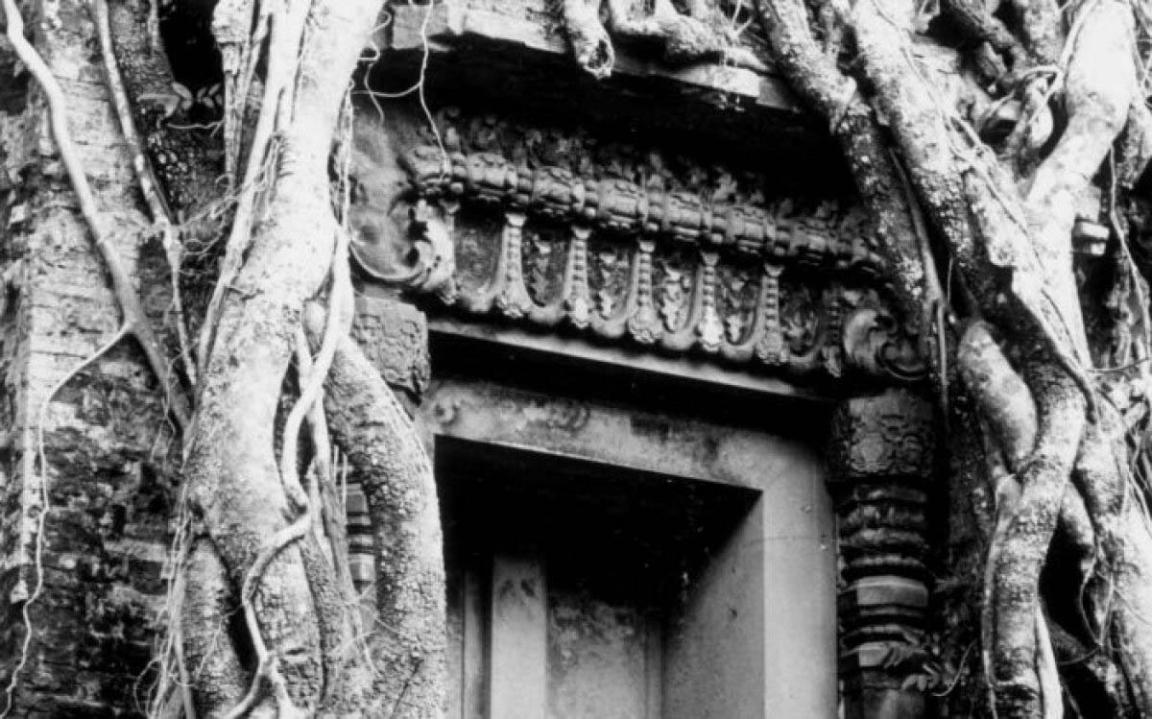
Yves Coffin, [Sambor Prie Kuk, view of false door on western side of temple], nla.gov.au/nla.obj-140373054
Yves Coffin, [Sambor Prie Kuk, view of false door on western side of temple], nla.gov.au/nla.obj-140373054
Learning activities
- How might the shift towards Theravada Buddhism have undermined the position of the royal court? Research the tenets of Theravada Buddhism and consider how this shift would have disrupted the government.
- Consider the argument that the change in climate played a part in the downfall of the Khmer Empire. How might this have impacted the empire?
- The Earth’s climate has fluctuated many times throughout history in a natural cycle. Have there been any other empires whose decline has coincided with these cycles? What reasons have been given for their collapse?
- With the Earth’s climate changing more rapidly than any other time in history, what might this mean for future stability of global food production?
- Suppose Canberra disappeared one day and everyone who lived and worked there had to leave. Speculate what problems would arise from that. What would have to happen for the country to continue to function? What would it mean for the economy? How would it impact people in other cities? (Activity could be scaled down to state level.)


